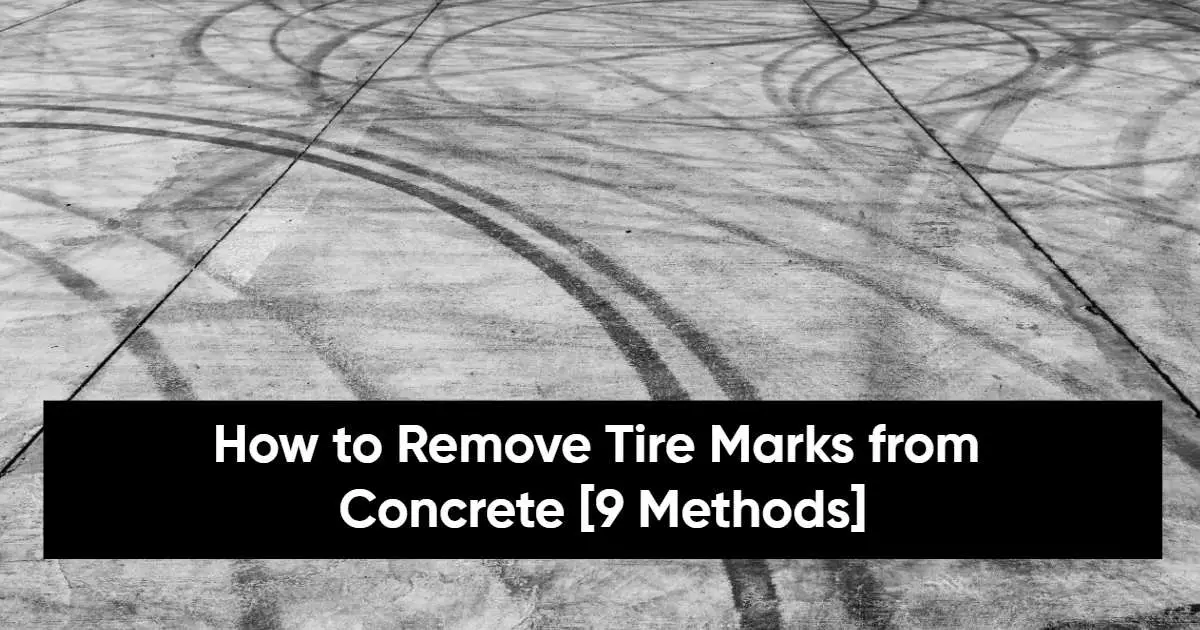Looking to get rid of those stubborn tire marks on your concrete surfaces? You’re in the right place. In this comprehensive guide, we’ll show you “How to Remove Tire Marks from Concrete” using various effective methods tailored to different surfaces. Whether it’s your driveway, garage, or patio, our step-by-step solutions and real-world tips will help you achieve a clean and mark-free surface. Let’s dive in!
Table of Contents
Causes and Persistence of Tire Marks
Understanding the causes and nature of tire marks is the first step to effective removal. Let’s delve into why tire marks occur on concrete and examine the factors that make them stubborn or easy to remove.
Why do tires leave marks on concrete?
Tires can leave marks on concrete due to a variety of reasons:
- Friction: When a tire skids or spins, it creates friction with the surface. The heat generated can lead to rubber getting left on the concrete.
- Rubber Composition: Tires contain oils and chemicals that can transfer to the surface, leaving a mark.
- Surface Texture: Concrete surfaces that are rough can trap more rubber, leading to more visible marks.
In real-world terms, think about a hurried driver who slams on the brakes. The friction causes the tires to skid, leaving a noticeable mark on the concrete.

Will rubber tire marks come off concrete?
The persistence of tire marks depends on several factors:
- Age of the Mark: Older marks are tougher to remove.
- Quality of Concrete: High-quality, well-sealed concrete is easier to clean.
- Type of Rubber: Some types of rubber create more persistent marks than others.
For example, if you have a new home with a freshly poured concrete driveway, you may find that tire marks come off relatively easily. But an older, more porous surface might require some elbow grease.
What chemical removes tire marks?
Knowing the right chemical can turn a tough cleaning job into a quick task. Chemicals interact with the rubber and the concrete, breaking down the bond that makes tire marks so stubborn. Let’s explore the options:
- Acetone: It’s a strong solvent that can break down rubber marks. However, it may also remove sealants on the concrete.
- Mineral Spirits: Effective but less harsh than acetone. It’s good for milder tire marks.
- Ammonia: Works well for lighter marks and is less harsh on concrete surfaces.
- Commercial Tire Mark Removers: These are specially designed and often contain a mix of solvents to remove tire marks effectively.
Here is a table for quick reference:
| Chemical | Effectiveness | Effect on Concrete |
| Acetone | High | May remove sealant |
| Mineral Spirits | Medium | Mild |
| Ammonia | Low | Mild |
| Commercial Removers | High | Variable |
Imagine you’re dealing with a set of fresh tire marks on your garage floor, left behind by your teenage driver practicing their parking skills. You can use mineral spirits for this purpose. Just pour a small amount on a cloth and start scrubbing. The marks should come off, and your garage floor will look as good as new.
Will vinegar remove tire marks from concrete?
Vinegar is a household staple known for its cleaning prowess, but how does it fare with tire marks? The answer is a qualified yes.
White Vinegar: It’s acidic enough to loosen some types of rubber marks but not strong enough for stubborn or older marks.
Apple Cider Vinegar: Less effective than white vinegar but can be useful for very light marks.
Here’s how you calculate the vinegar you’ll need:
Area of tire mark: Suppose each tire mark is 1ft long and 4 inches wide. The area would be
1 ft×(⅓) ft=(⅓) ft^2
Vinegar needed: For light cleaning, you would need around 1 oz of vinegar per square foot. So for our example, you would need approximately ⅓ oz of vinegar.
Use vinegar as a milder, more eco-friendly option when the tire marks are not that severe. But for more stubborn stains, you might need to resort to stronger chemicals.
Household Solutions and Chemical Methods
Now that we’ve explored the reasons behind those unsightly tire marks, let’s talk about solutions. Household items can be surprisingly effective, and for those tougher marks, specialized chemical methods can do the trick. This section will give you a comprehensive guide on both.
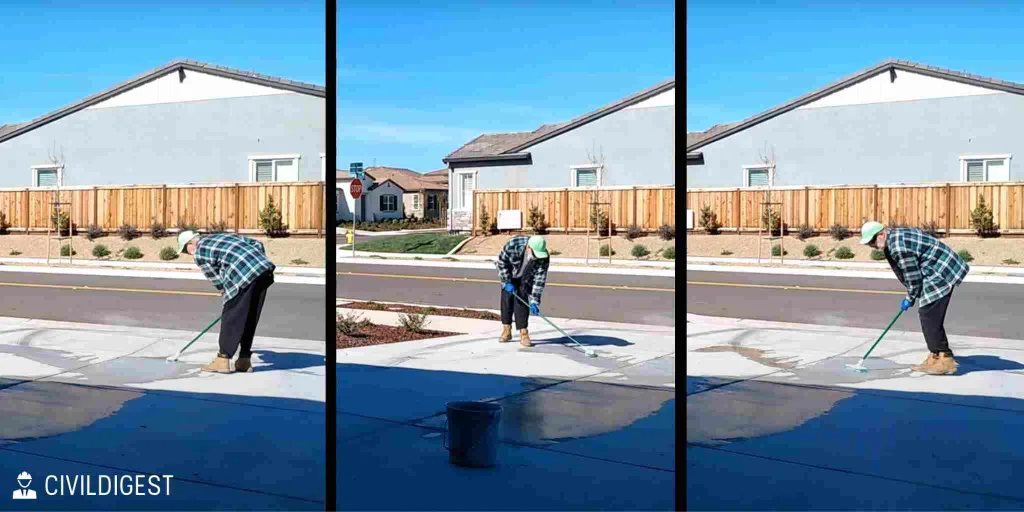
Basic Home Remedies
Sometimes, you don’t need to rush to the store; your home supplies can be quite effective. Let’s start with the basics.
[METHOD 1] Degreaser for Tire Marks
Degreasers work by breaking down oils and greases, making it easier to remove marks left by tires. You can use a variety of degreasers, such as:
Dish Soap: Mix dish soap and hot water for a simple solution.
Laundry Detergent: A more concentrated form can be effective.
DIY Degreaser: Mix equal parts of vinegar and warm water.
Here’s a handy table to help you choose:
| Type of Degreaser | Mix Ratio | Application |
| Dish Soap | 1:3 (Soap:Water) | Mix and scrub |
| Laundry Detergent | 1:2 (Detergent:Water) | Apply, let sit, and scrub |
| DIY Degreaser | 1:1 (Vinegar:Water) | Apply and scrub |
If you have a tire mark that is 2 feet long and 4 inches wide, the area to cover would be
2ft×1/3 ft=2/3 ft^2
Let’s say you’re using the Dish Soap solution with a 1:3 mix ratio. For an area of 2/3 ft^2, you would need:
Soap Needed: 2/3ft^2×1 oz/ft^2=⅔ oz
Water Needed: 2/3ft^2×3 oz/ft^2= 2 oz
Simply mix the calculated amounts of dish soap and water, apply it to the tire mark, and scrub away. Your concrete will look as good as new in no time!
[METHOD 2] Water & Broom Cleaning
Water and a good old-fashioned broom can sometimes do wonders. This method is best for fresh tire marks, as older ones might need a more potent solution.
Steps:
- Wet the area with a hose.
- Use a hard-bristled broom to scrub the tire marks off.
- Rinse and repeat if necessary.
[METHOD 3] Deep Degreaser Treatment
If water and a broom aren’t enough, a deep degreaser treatment might be your next best option.
Steps:
- Pour the degreaser directly on the tire mark.
- Let it sit for 5-10 minutes.
- Scrub the area with a stiff straw brush.
- Rinse off with water.
[METHOD 5] Diverse Home Remedies
Sometimes, you have to go beyond the basics. There are many other items around your house that can work effectively.
Options:
- Magic Eraser: Simply wet it and scrub.
- WD-40: Spray and let sit for a few minutes, then scrub.
- Mild Soap and Cloth: Old school but effective.
- Adhesive Remover: Apply, let sit, then scrub.
- Racing Rubber Remover: Specifically made for the job.
- Polishing and Waxing Compound: For a smooth finish.
Here’s how you can decide which one to use:
| Method | Time to Sit (min) | Scrubbing Required? |
| Magic Eraser | Immediate | Yes |
| WD-40 | 5 | Yes |
| Mild Soap and Cloth | 2-3 | Yes |
| Adhesive Remover | 5-10 | Yes |
| Racing Rubber Remover | 10-15 | Yes |
| Polishing and Waxing Compound | 5 | No |
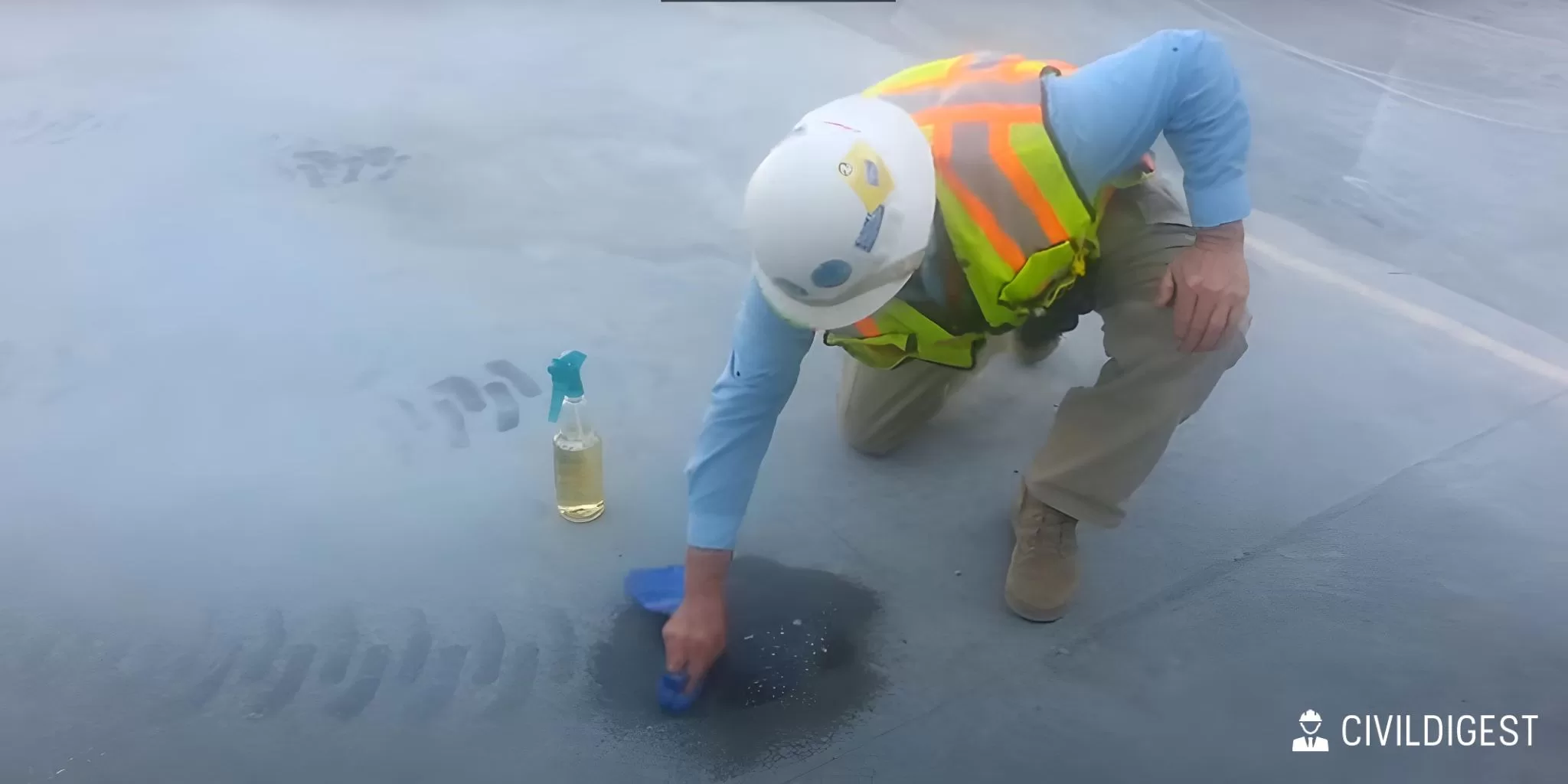
Commercial Products and Kits for Effective Removal
When household remedies don’t cut it, commercial solutions are your best bet. These specialized products are designed to tackle stubborn rubber tire marks. They often contain strong active ingredients that can dissolve or break down the rubber compounds that have stained the concrete.
[METHOD 5] Rubber Skid Mark Cleaners
Specially formulated cleaners target rubber skid marks, offering a more potent cleaning option. These are often acid-based or solvent-based solutions that get the job done effectively.
Steps:
- Apply the cleaner directly on the skid mark.
- Wait for 10-15 minutes for the cleaner to break down the rubber.
- Scrub vigorously with a stiff brush.
- Rinse thoroughly with water.
[METHOD 6] NAB Mark Remover
NAB Black Streak and Tire Mark Remover is another commercial cleaner specifically formulated for stubborn marks. It’s a bit pricier but incredibly effective.
Steps:
- Spray the NAB Mark Remover directly onto the mark.
- Allow it to sit for approximately 5 minutes.
- Scrub the mark using a stiff brush.
- Rinse away the residue with water.
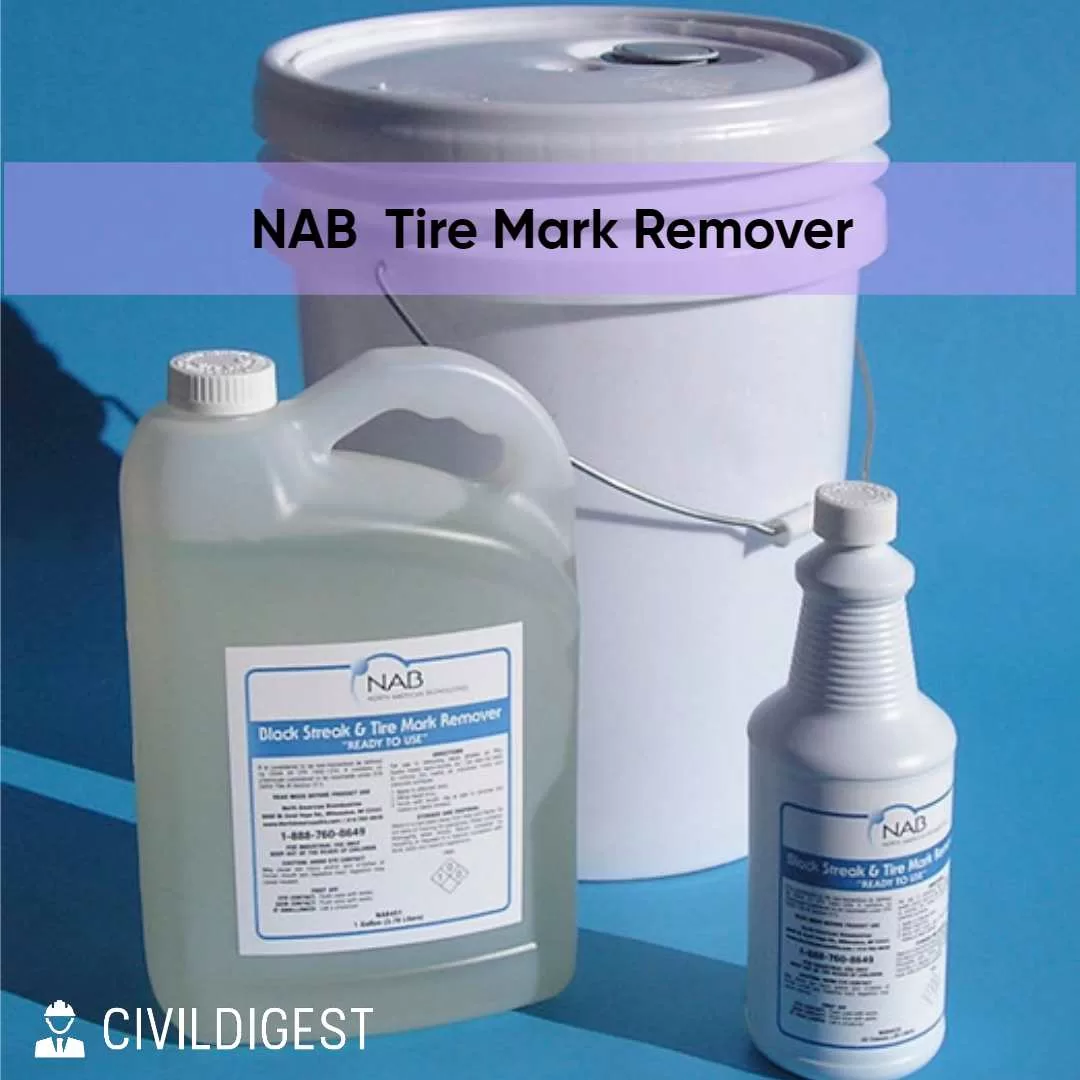
[METHOD 7] Burn Out Industrial Tire Mark Remover and Pre-Spray
Burn Out is an industrial-grade tire mark remover that is effective for even the most stubborn marks. It’s designed to break down tire marks with industrial strength, making it suitable for both home and professional use.
Steps to Use Burn Out:
- Spray the Burn Out Pre-Spray over the affected area.
- Wait 10 minutes to let the chemical act on the marks.
- Apply Burn Out Industrial Tire Mark Remover.
- Scrub the area with a stiff-bristled brush.
- Rinse thoroughly with water.
[METHOD 8] Use Universal Concrete Cleaner
Universal Concrete Cleaner is a milder but effective option that can be used for various surfaces.
Steps:
- Saturate the tire marks with Universal Concrete Cleaner.
- Let it sit for about 5-10 minutes.
- Scrub the stain with a stiff-bristled brush.
- Rinse the area well with water.
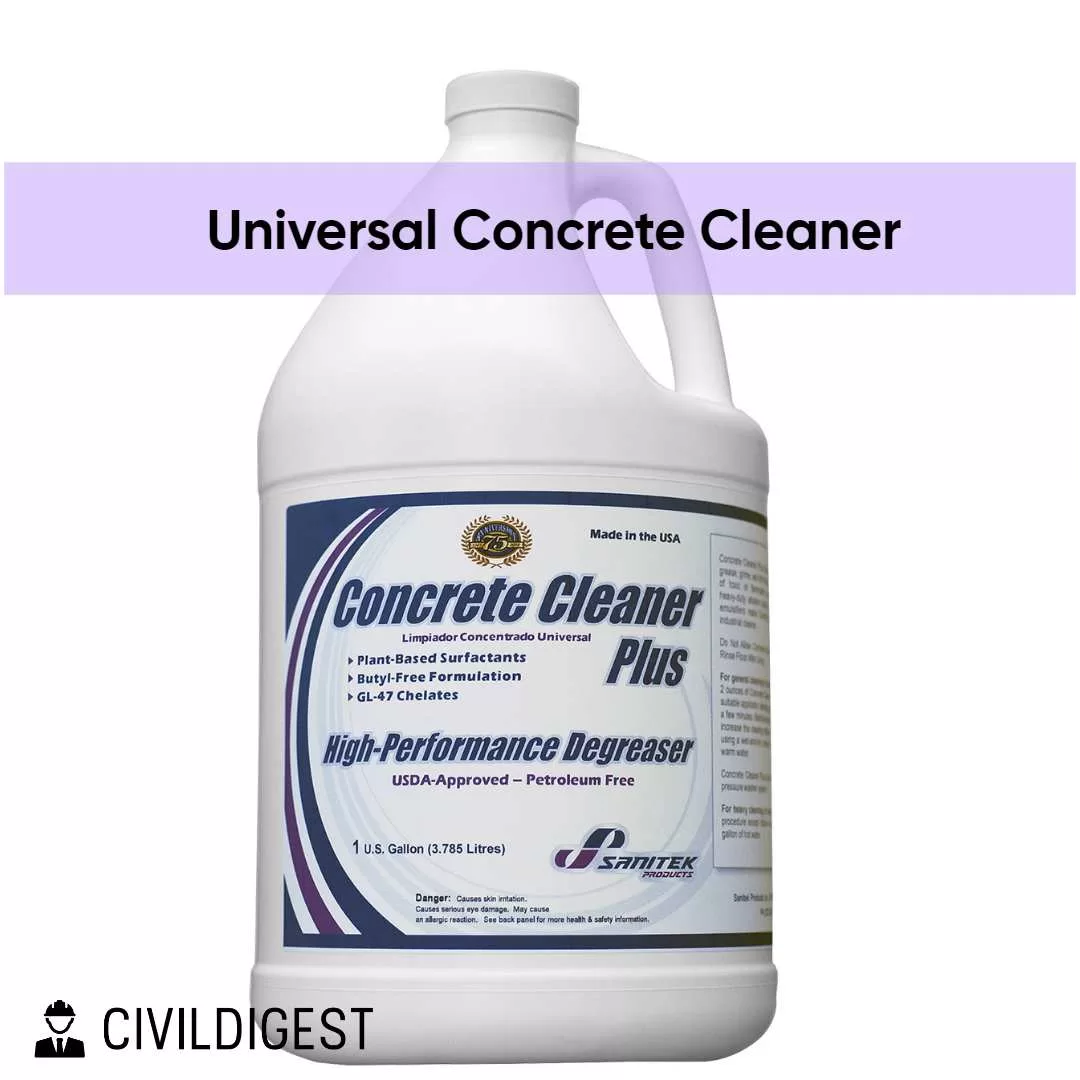
[METHOD 9] Comprehensive Removal Kit Usage
For those who want a full package, consider a tire mark removal kit. These kits usually include a strong cleaner, a wood pole with metal thread, an H2O pad, and a 12″ pad holder.
Steps:
- Apply the strong cleaner from the kit onto the tire mark.
- Use the wood pole to attach the 12″ pad holder.
- Place the H2O pad on the holder.
- Scrub the area until the mark disappears.
- Rinse off the residue.
| Product | Wait Time (minutes) | Scrubbing Required? | Components Included |
| Rubber Skid Mark Cleaners | 5 | Yes | Cleaner |
| NAB Mark Remover | 10 | No | Black Streak and Tire Mark Remover |
| Burn Out Industrial Tire Mark Remover and Pre-Spray | 10 | Yes | Pre-Spray and Tire Mark Remover |
| Universal Concrete Cleaner | 5-10 | Yes | Cleaner |
| Comprehensive Removal Kit | Varies | Yes | Cleaner, Wood Pole, H2O Pad, 12″ Pad Holder |
A Comprehensive Guide to Eradicating Tire Marks
Tire marks on concrete are not just unsightly; they can also degrade the quality of the surface over time. Whether you’re dealing with a residential driveway or a commercial parking area, removing these marks effectively is crucial. Below is a step-by-step guide that blends chemistry and hands-on tactics for foolproof tire mark eradication.
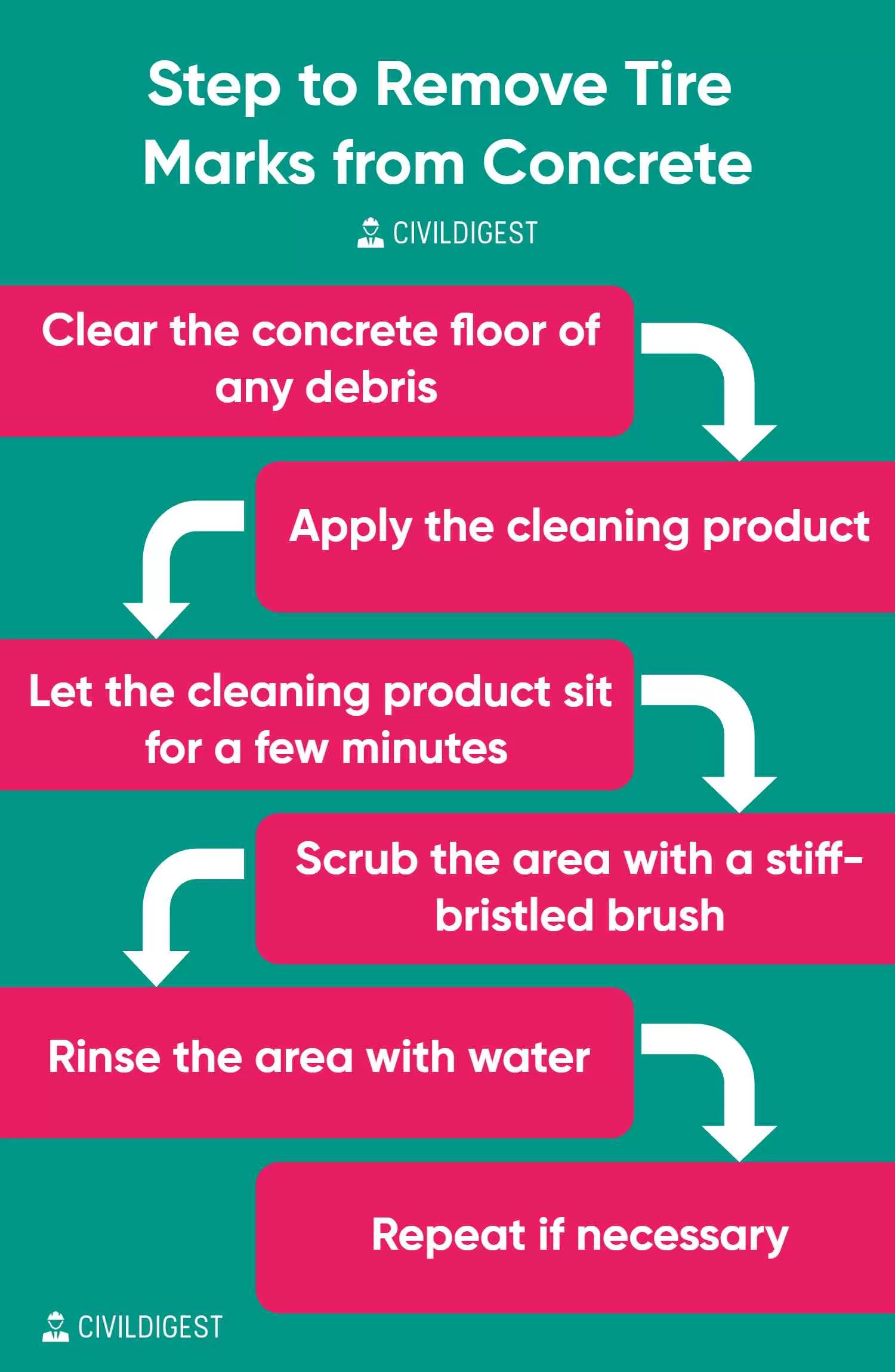
Clear the concrete floor of any debris
Before applying any chemicals or cleaning products, it’s crucial to remove any surface debris.
- Use a Stiff-Bristled Brush: Brush away loose dirt and dust. These particles can scratch the surface when you’re scrubbing later on.
- Sweep Up: Use a sturdy broom to sweep the concrete clean.
- Optional: Use a Leaf Blower: For large areas, a leaf blower can be more efficient.
Why it’s important: Debris can interfere with the cleaning products, making them less effective. Plus, you don’t want to scrub grit into the surface and create more problems.
Apply the cleaning product
Here’s where the real action starts. Depending on the product you’re using, the application process can differ. Here’s a general guide:
Dilution: If your cleaner requires diluting, do it according to the instructions.
Pour or Spray: Apply the cleaner generously on the tire marks. If your product comes in a spray bottle, aim it directly at the mark.
Spread Evenly: Use a scrubbing brush to spread the cleaner evenly across the surface. This ensures maximum contact.
Calculation for Quantity: If you’re wondering how much product to use, here’s a simple calculation. For a cleaner that covers 100 sq. ft per gallon, and you have a 10×10 area, you’ll need at least 1 gallon.
Why it’s important: An even application of the product ensures that the active ingredients will react more effectively with the tire marks, improving the chances of complete removal.
Let the cleaning product sit for a few minutes
- Time Matters: Apply the cleaning product and let it sit for a few minutes. The back label should specify the wait time.
- Clock It: Use a timer to avoid under or over-waiting.
Why It’s Important: Giving the cleaner time to sit allows it to break down the rubber molecules, making it easier to scrub away the marks.
Scrub the area with a stiff-bristled brush
- Get Scrubbing: Use a brush with stiff bristles and scrub in a circular motion.
- Pressure is Key: Add a bit of elbow grease, but don’t go overboard.
- Check: Pause to check if the tire marks are lifting.
Why It’s Important: Proper scrubbing enhances the cleaning agent’s effectiveness, and a stiff-bristled brush can dig into the texture of the concrete for a more thorough clean.
Rinse the area with water
- Prepare: Have a hose or buckets of water ready.
- Rinse Well: Start rinsing from one end to the other, ensuring that all the cleaner is washed away.
Why It’s Important: Failing to rinse thoroughly could leave residues that may attract more dirt or even damage the concrete over time.
Repeat if necessary
- Inspect: Check to see if any marks remain.
- Repeat: If you still see marks, you’ll need to go through the steps again.
- Record: Keep a log of how many cycles it took to clean effectively for future reference.
Why It’s Important: Some stubborn marks may require a second or even third cleaning cycle.
Safety and Precautionary Steps
While we’re all eager to get those pesky tire marks off the concrete, rushing in without taking safety and precautionary measures could backfire.
- Identify the Spot: Choose a small, hidden corner of your concrete surface to test the cleaner. The idea is to pick a place that won’t be noticeable in case the cleaner discolors or damages the surface.
- Why Test?: Testing helps you avoid wide-scale damage and wastage of resources. If the cleaner doesn’t work or harms the concrete, better to find out on a 2×2 ft area than the whole driveway.
- How to Test:
- Step 1: Wear safety gloves and goggles.
- Step 2: Apply a small amount of the cleaner on the chosen spot.
- Step 3: Let it sit as per the product’s recommendations. Usually, 5-10 minutes is a good range.
- Step 4: Rinse off and dry the area.
- Check Results: Inspect for any discoloration, etching, or surface damage.
Why It’s Important: Testing is your safety net. It could save you from damaging your entire surface or from wasting time and resources on an ineffective product.
Preventing the Occurrence of Tire Marks
Unwanted tire marks on concrete surfaces can be unsightly, but good news: prevention is entirely possible. By taking proactive steps, you can maintain the appearance of your driveways, patios, or garage floors.
Read Also: How Thick Should a Concrete Patio be ? Practical Guide
Tips to prevent tire marks from forming on concrete surfaces
- Quality of Concrete: Invest in high-quality concrete with a well-calculated mix of materials. Stronger concrete is less susceptible to marking.
- Seal the Surface: Use a penetrating sealer on your concrete surface. This adds an extra layer of protection against tire marks.
- Correct Tire Pressure: Ensure your vehicle’s tires are properly inflated. Over-inflated tires are more likely to skid and leave marks.
- Avoid Sudden Braking: The faster you stop, the more likely you are to leave a mark. Gradual braking is less damaging to your concrete surface.
- Regular Cleaning: Routine cleaning can preemptively remove substances that may encourage marks to stick more stubbornly.
Importance of regular maintenance
Regular maintenance is not just about keeping your concrete surfaces looking new; it’s a long-term investment in the life of the surface.
- Regular Inspection: Keep an eye out for early signs of wear or marking. Early intervention is always more effective.
- Scheduled Cleaning: Regular cleaning can remove dust and small debris, which could otherwise contribute to tire marking.
- Sealant Re-application: Sealer doesn’t last forever. Plan to reapply it every 2-3 years.
- Hire Professionals: Sometimes it’s good to get a professional’s eye. They can spot issues you might miss and offer specialized solutions.
Preventative maintenance not only makes the surface more resistant to tire marks but also prolongs its overall lifespan. It’s a win-win situation; you not only prevent unsightly tire marks but also extend the concrete’s functional life.
Specialized Methods for Different Concrete Surfaces
It’s crucial to understand that not all concrete surfaces are the same. Depending on the material, finish, and location, the approach to removing tire marks will vary. In this section, we’ll delve into the nuances of cleaning different types of concrete surfaces.
How to remove tire marks from concrete driveway
- Pressure Washing:
- This is particularly useful for outdoor driveways.
- Use a pressure washer with at least 2000 PSI for effective cleaning.
- Chemical Cleaners:
- Apply a concrete cleaner and let it sit for 5-10 minutes before scrubbing.
How to remove tire marks from pavers
- Baking Soda and Water:
- Mix equal parts and scrub the area with a brush.
- Paver Sealer:
- Reapply a paver sealer after cleaning to prevent future marks.
How to remove tire marks from painted driveway
- Mild Soap Solution:
- Use a soap solution so as not to damage the paint.
- Soft Bristled Brush:
- To avoid scraping off the paint, use a soft-bristled brush.
How to remove tire marks from concrete garage floor
- Degreaser:
- Apply a degreaser and let it sit for 15 minutes before scrubbing.
- Abrasive Pad:
- For stubborn marks, use an abrasive pad in conjunction with degreaser.
By understanding the material and location of your concrete surface, you can tailor your cleaning method for the most effective results. Always remember to follow safety guidelines when using chemicals and operate machinery like pressure washers.
Conclusion
Navigating the challenges of eradicating tire marks from various concrete surfaces doesn’t have to be a daunting task. Whether it’s your driveway, pavers, a painted surface, or your garage floor, specialized methods exist to tackle each scenario.
We’ve walked through how different cleaning agents and techniques—such as pressure washing, chemical cleaners, and household remedies—can be tailored to the type of surface you’re dealing with.
Remember, safety comes first; always test cleaning products on a small patch before fully committing. Regular maintenance and preventative measures are your long-term allies in keeping those surfaces in tip-top condition. Follow these guidelines and you’ll not only remove those pesky tire marks but also extend the lifespan of your concrete surfaces.
